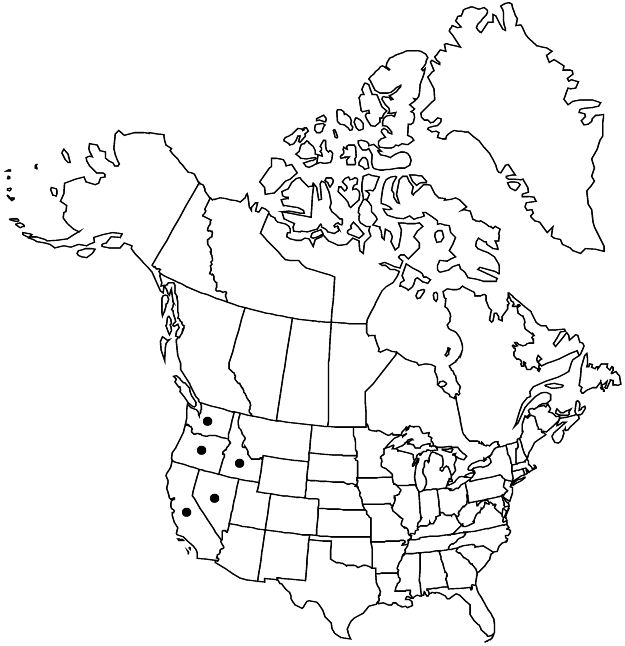Ceanothus prostratus
Pl. Hartw., 302. 1849.
Shrubs, 0.1–0.3 m, matlike to moundlike. Stems prostrate, spreading, or ascending, rooting at distal nodes; branchlets reddish brown, ± flexible, puberulent, glabrescent. Leaves not fascicled, crowded, usually longer than internodes and obscuring them; petiole 1–3 mm; blade flat to ± cupped, elliptic to obovate, 6–30 × 4–16 mm, base cuneate, margins sometimes thick, not revolute, sometimes wavy, sharply dentate to spinose-dentate, teeth 3–9, apex rounded, abaxial surface pale green, glabrous except sparsely strigillose on veins, adaxial surface dark green, shiny, glabrate. Inflorescences axillary, 0.9–2 cm. Flowers: sepals, petals, and nectary pale to deep blue or purplish blue. Capsules 6–9 mm wide, lobed; valves smooth to rugulose, horns subapical, prominent, erect or spreading, rugose or not, intermediate ridges present. 2n = 24.
Distribution

Calif., Idaho, Nev., Oreg., Wash.
Discussion
Varieties 2 (2 in the flora).
Putative hybrids between Ceanothus prostratus and C. velutinus var. velutinus, named C. ×rugosus, have been reported from northeastern California (H. McMinn 1944). A rare putative hybrid between C. prostratus and C. cordulatus in the Lake Tahoe basin has been named C. ×serrulatus. Both C. ×rugosus and C. ×serrulatus are intersubgeneric hybrids. Formally named hybrids between C. prostratus and C. cuneatus var. cuneatus include C. ×flexilis and possibly C. ×connivens, but the latter could have C. fresnensis as one of the parents rather than C. prostratus.
Selected References
None.
Key
| 1 | Leaf blades flat, margins not wavy, teeth usually 3–5(–7); capsule horns erect. | Ceanothus prostratus var. prostratus |
| 1 | Leaf blades slightly folded lengthwise adaxially, margins ± wavy, teeth 5–9; capsule horns spreading. | Ceanothus prostratus var. occidentalis |